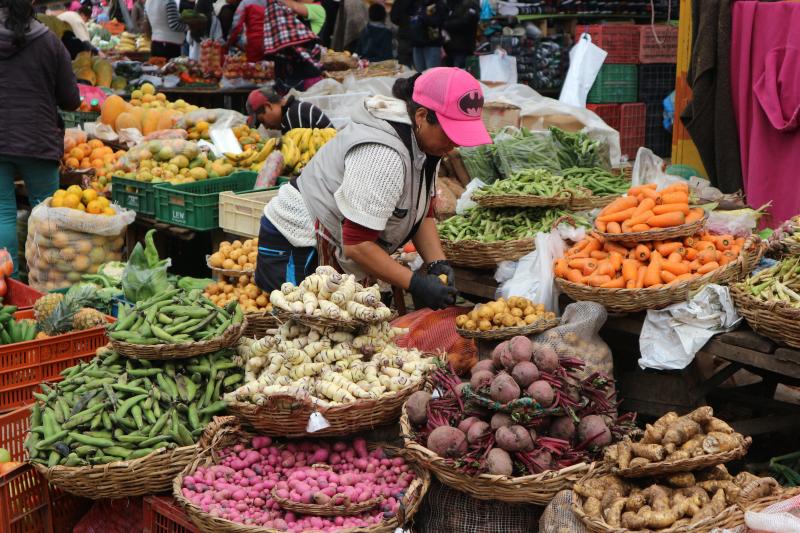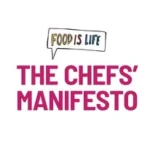
By Benedetta Gori and Maria del Pilar Mira, Useful Plants and Fungi of Colombia Project, the Royal Botanic Gardens, Kew
“We must radically reduce the area we use to farm so that we can make space for returning wilderness. And the quickest and most effective way to do that is for us to change our diet”.
Sir David Attenborough 2020.
Colombia is the world’s second most biodiverse country, hosting around 26,000 plant species. Because of its location, it brings together a great number of different natural ecosystems, as well as an outstanding variety of human cultures. However, despite such unrivalled biocultural richness, the country is nowadays characterised by widespread food insecurity and social inequalities.
This can in great part be attributed to the progressive loss of edible plant diversity and traditional knowledge related to its consumption. Over the past decades, increasing involvement of the country in the global trade market of natural products has been portending homologation of food systems, impoverishment of local diets and, in turn, narrowing of crop species diversity.
Based on the State of the World’s Plants and Fungi 2020 report published by the Royal Botanic Gardens, Kew, our daily diet is made up of a very small amount of food plant species compared to the totality of those that nature provides us. Only 15 plants provide up to 90% of the world’s population caloric intake, in contrast to more than 7,000 known edible species, wild and cultivated.
The increasing concentration of the global food demand on just a few plant-based resources has led to the steep increase in large-scale agriculture, especially within developing countries, and to progressive deforestation in favour of agricultural monocultures. Today, partly because of this trend, 2 in 5 plant species are at risk of extinction.

In light of the recognition of the strong link between people’s diet and biodiversity conservation, the Useful Plants & Fungi of Colombia (UPFC) project, led by Kew with the collaboration of the Humboldt Institute, is working on science-based solutions for preventing edible plants of Colombia from being lost without their value being recognized. The project’s aim is to develop pathways to enhance nature’s contribution to local peoples’ livelihoods through increasing, consolidating, and making accessible knowledge on native useful plants and fungi, as well as promoting a market for useful indigenous species and the high value products derived from them.
To achieve such goals, UPFC has been working on the development of two online platforms: ColPlantA and ColFungi (www.colfungi.org, to be launched soon), which will gather the most up-to-date information on plants and fungi of Colombia; and a Value Chain Network (VCN), another digital platform that will facilitate sustainable value chains using the Colombian plant and fungal diversity, enabling connection between businesses, local communities, and customers.
So far, more than 1,520 edible plant species have been identified by the project team, many of them used at the local scale or just barely used. The project principal investigator and research leader at the Royal Botanic Gardens, Kew, Mauricio Diazgranados, says “this is more than 20% of all known world’s edible plants, converting this country in a ‘reservoir of food diversity’ for humanity”.
This work is supported by a Professional Development & Engagement grant – funded by the UK Department for Business, Energy and Industrial Strategy (BEIS) and the Colombian Ministry of Science, technology and Innovation (MinCiencias), and delivered by the British Council – and a partnership with the Humboldt Institute – a non-profit civil corporation linked to the Colombian Ministry of Environment and Sustainable Development (MADS).
Thanks to this initiative, Colombia’s edible plants and fungi not only have the potential to be turned into a crucial socio-economic resource to improve impoverished communities’ lives through the development of new livelihoods and the containment of food insecurity, but can form the basis of an innovative bioeconomy for the entire country, built upon the sustainable use of its natural resources.
On the way to a new Colombian gastronomy, whose roots will sink into earth and indigenous cultures, Borojó,guáimaro, copoazú, chontaduro and many other food plants will lead our way towards a future harmony between man and environment.
Check out the Colombian cuisine masterclass below to explore some of Colombia´s most unique ingredients and learn how to cook the most exquisite recipes with edible plants that could improve our nutrition and help protect the planet.








